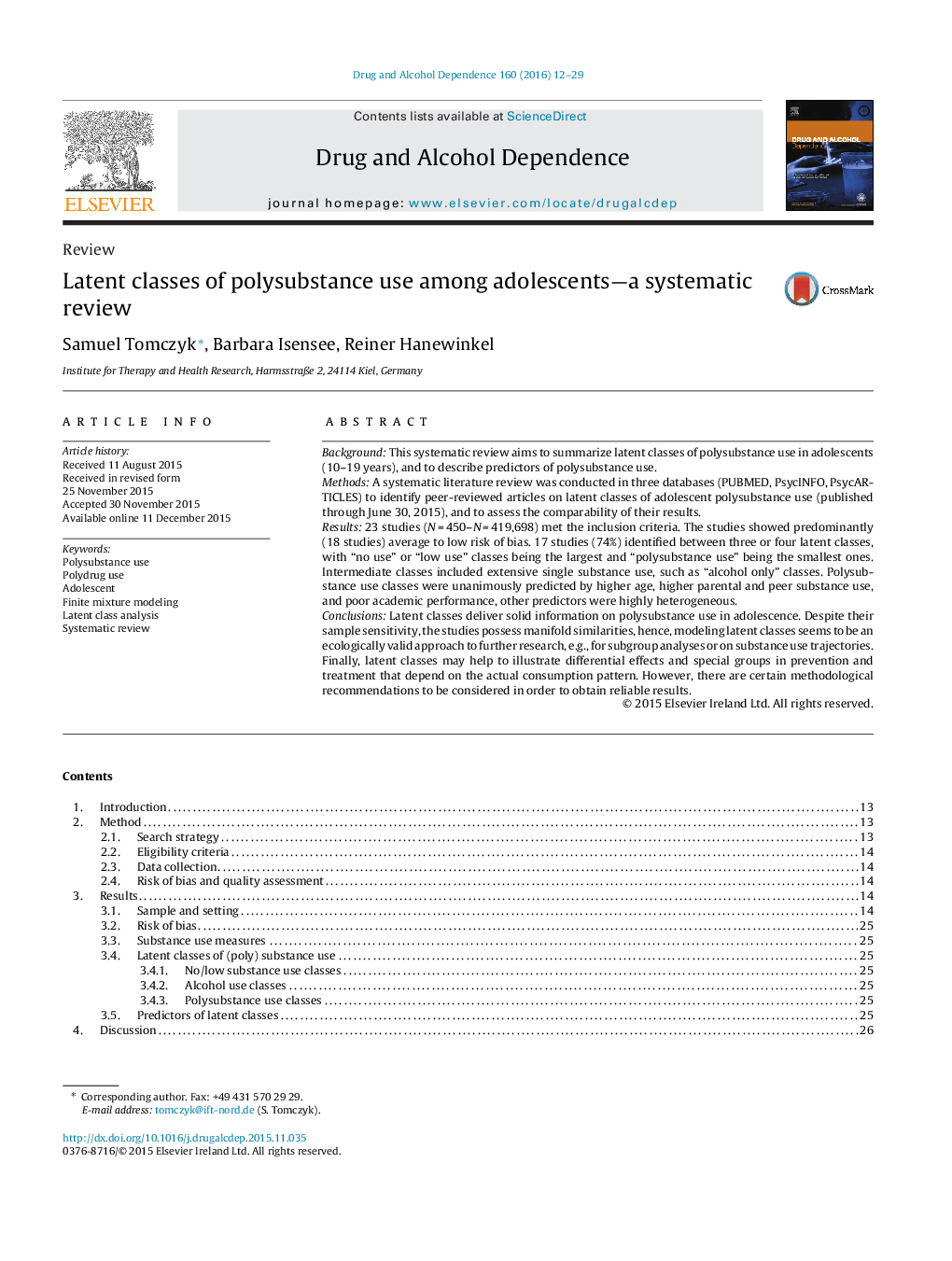| Article ID | Journal | Published Year | Pages | File Type |
|---|---|---|---|---|
| 1069701 | Drug and Alcohol Dependence | 2016 | 18 Pages |
•We found 23 LCA studies on polysubstance use in adolescents (10–19 years).•17 studies found 3–4 classes: no/low use, single substance use, polyuse.•Higher age, poor grades, parental and peer use predicted polysubstance use.•However, predictors were very heterogeneous; 5 studies had a high risk of bias.•Latent classes are useful for selective interventions and subgroup analyses.
BackgroundThis systematic review aims to summarize latent classes of polysubstance use in adolescents (10–19 years), and to describe predictors of polysubstance use.MethodsA systematic literature review was conducted in three databases (PUBMED, PsycINFO, PsycARTICLES) to identify peer-reviewed articles on latent classes of adolescent polysubstance use (published through June 30, 2015), and to assess the comparability of their results.Results23 studies (N = 450–N = 419,698) met the inclusion criteria. The studies showed predominantly (18 studies) average to low risk of bias. 17 studies (74%) identified between three or four latent classes, with “no use” or “low use” classes being the largest and “polysubstance use” being the smallest ones. Intermediate classes included extensive single substance use, such as “alcohol only” classes. Polysubstance use classes were unanimously predicted by higher age, higher parental and peer substance use, and poor academic performance, other predictors were highly heterogeneous.ConclusionsLatent classes deliver solid information on polysubstance use in adolescence. Despite their sample sensitivity, the studies possess manifold similarities, hence, modeling latent classes seems to be an ecologically valid approach to further research, e.g., for subgroup analyses or on substance use trajectories. Finally, latent classes may help to illustrate differential effects and special groups in prevention and treatment that depend on the actual consumption pattern. However, there are certain methodological recommendations to be considered in order to obtain reliable results.
